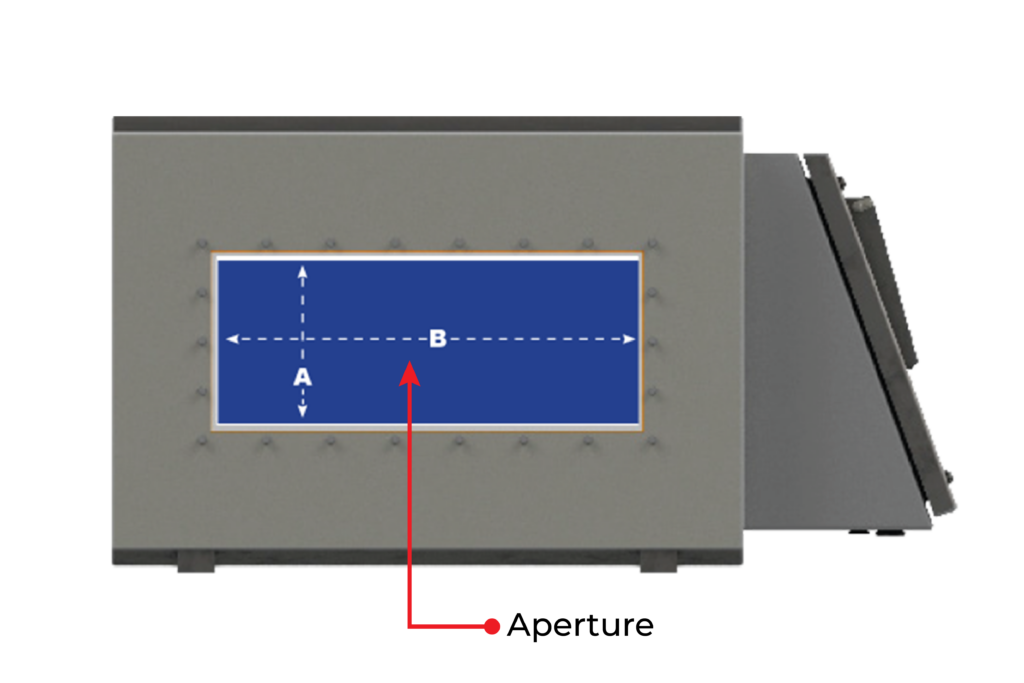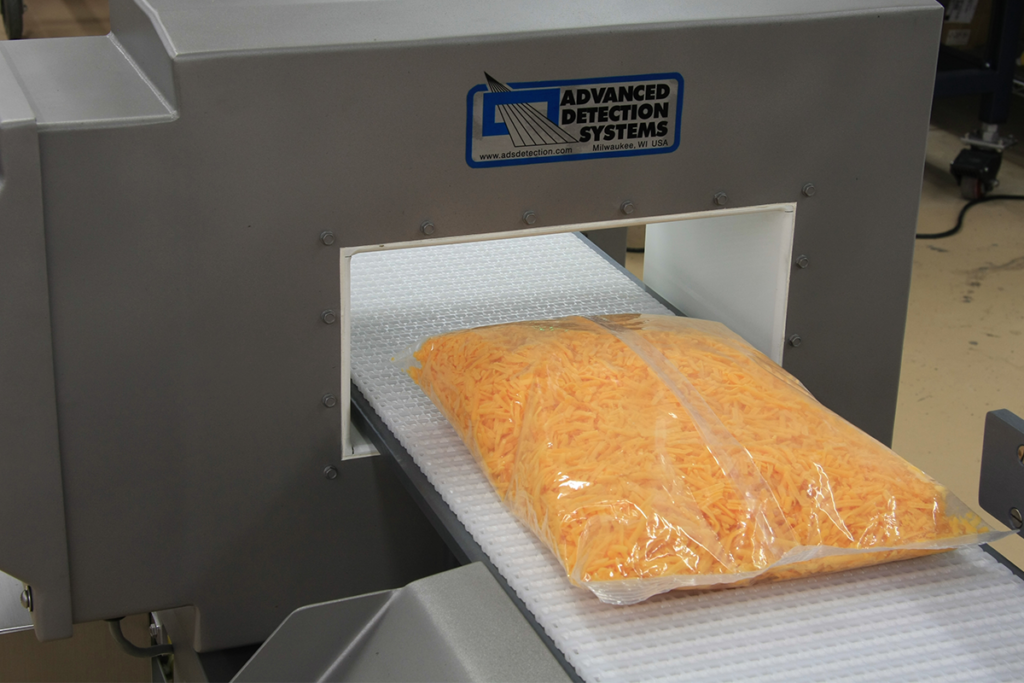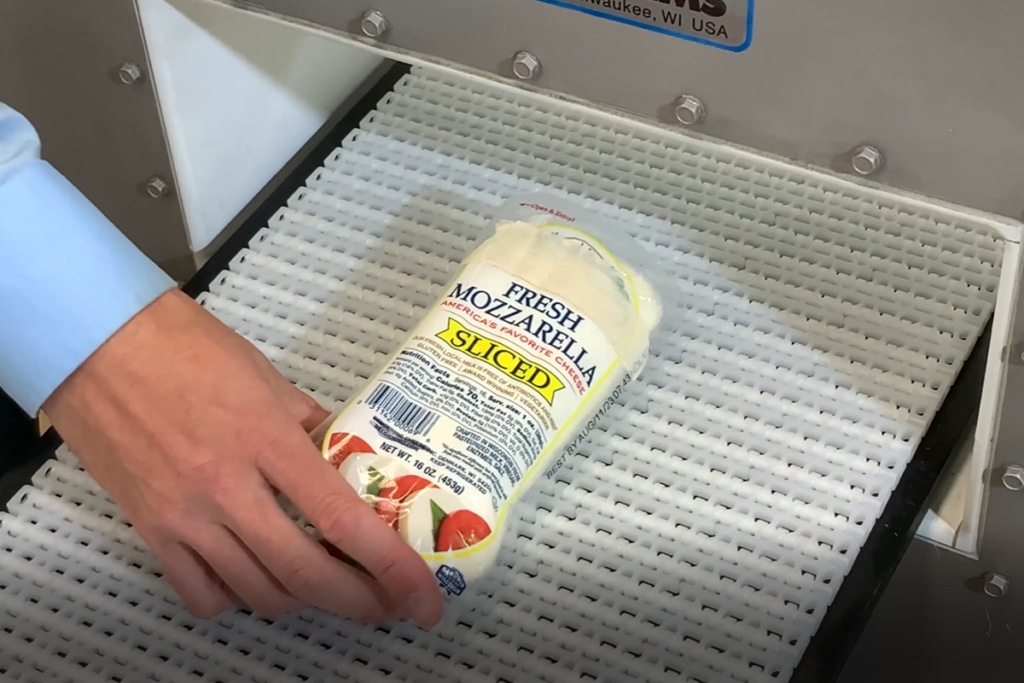The Theory Behind Metal Detection
Balanced Coil
All metals are either magnetically conductive, electrically conductive or both. When they enter an electro-magnetic field, they create a detectable disturbance or “signal”. Modern metal detectors operate on the balanced coil, full loop system which allows detection of this signal.

A balanced coil consists of three coils looping inside a static shielded head that has a built-in aperture through which product passes. The head houses a transmitter coil that broadcasts a radio frequency signal and generates an electro-magnetic field. On either side of the transmitter are two equidistant receiver coils. Signals from the receiving coils are connected in opposition to each other and when no disturbance is present, the net signal across the coil is zero. They are balanced. It is the electrical equivalent of a balanced weight scale. This balance is disturbed as metal contamination enters the aperture. The control electronics amplify and analyze the disturbance, then indicate a “detection” if the signal is greater than an established sensitivity threshold.
Detection Sensitivity
Aperture size effects the sensitivity of a given metal detector. Smaller apertures generally allow smaller pieces of metal to be detected. The smaller dimension of rectangular apertures (A) is used to calculate the sensitivity, although the length also contributes. The smallest size aperture should be selected to maximize the sensitivity of a metal detector, however, there are some exceptions including metalized film and highly conductive product (e.g. large blocks of cheese).

Metal Detection sensitivity is also affected by the position of the contaminant in the aperture. The least sensitive point is the center of the aperture, this makes it the best location to test performance. As metal gets closer to the sides (and the coils), the signal it generates gets larger, making it easier to detect. Regular testing of the metal detector should ensure the test wand passes close to the center of the aperture. If this is not practical, a consistent position should be used so test results will be consistent.
Factors that can affect Metal Detection Accuracy
Balance Stability
Very small movements in the mechanical construction of the metal detector can also disturb the balance of the three coils. These movements can cause the metal detector to indicate that metal is present when it is not (Called “False Triggering“), or they can cause the loop to remain out of balance and continuously “false trigger” and require re-balancing.

Movement can be caused by expansion of the detector from changes in temperature, vibration from nearby equipment causing the metal detector to vibrate, instability in the metal detector’s construction, and other causes. Robust construction, as well as good electronic and mechanical design, can accommodate such movement and make the metal detection system more reliable. Modern electronics design includes automatic balance control as part of its standard features. Good mechanical design includes enhanced potting techniques to minimize false triggering. Together they combine to increase reliability and best possible sensitivity.
Product Effect on Metal Detectors
Metal detectors measure electrical conductivity and magnetic permeability. Many inspected products inherently have one or both of these characteristics. Many grains and powders are “dry” products with little or no product effect The exception to this is iron-enriched products (e.g. cereals). These iron enriched cereals create a large magnetic signal that hampers the metal detector’s ability to detect the magnetic signal of small pieces of metal.
Products with high moisture, fat, and salt or other mineral content (e.g. bread, meat, cheese, etc.) are electrically conductive and produce a conductive error signal, and are commonly called “wet” products.

Product testing and accurate specification of contaminant are essential to determine the metal detector’s sensitivity and product effect. Advanced Detection Systems will conduct this testing, free of charge at our factory lab in Milwaukee, Wisconsin to ensure the detection levels for your specific product will meet your needs. We stand by this with a written guarantee.
What Sizes and Types of Metal can be Detected and Removed
Metal detectors are designed to find ferrous, non-ferrous and stainless-steel impurities in product whether conveyed, pumped or flowing through a gravity drop system. The contaminants are commonly on a 1-3 ½ millimeter scale. The testing procedure employed to gauge metal detection sensitivity uses wands containing metal spheres to remove the effects of orientation on detection levels to ensure accuracy.
Industrial & Food-Grade Metal Detectors from Advanced Detection Systems
Advanced Detection Systems, in business for 30 years has developed a reputation for manufacturing high quality, reliable metal detection equipment for a variety of food processing and industrial applications. With engineering, manufacturing, sales and customer service staff working side by side in our Milwaukee, WI facility we can provide prompt, expert advice. We’re here to help, call us at (414-672-0553) or e-mail sales@adsdetection.com to discuss your application details and metal detection needs.
